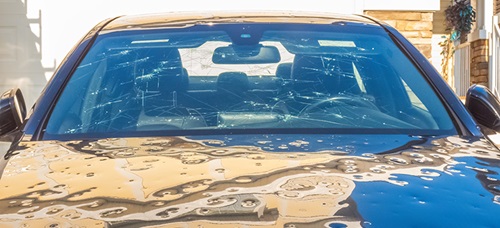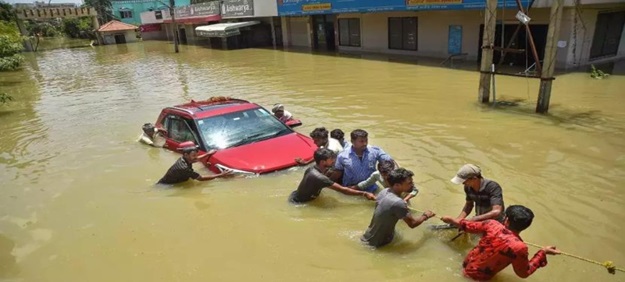Natural disasters put cars in great danger and often cause damage that can be very expensive. Knowing if their car insurance covers these things is essential for peace of mind for many drivers. Understanding the different types of natural disasters that complete security can cover is critical from storms to earthquakes. This article tells you everything you need to know about how natural disasters affect car insurance so you’ll be ready for anything.
Types Of Natural Disasters Covered
Most car insurance plans cover a wide range of natural disasters protecting you financially in case your car is damaged unexpectedly. Researching the natural disasters that are covered can help you prepare for possible risks and ensure that your car is safe in tough situations.
Hurricanes And Tropical Storms
Most of the time hurricane and tropical storm damage to cars is covered by insurance. This includes damage from wind floods and falling objects. Your policy may set coverage limits and fees depending on where you live and how bad the storm was.
Floods
Damage from floods is usually covered by full coverage auto insurance. This is very important in places that often flood when it rains a lot, storm waves happen or snow melts. Most flood insurance plans will fix or replace your car if it gets damaged or covered by rising water.
Earthquakes
In places where earthquakes are common insurance plans may cover damage caused by earthquakes. This can include damage to your car structure or losses caused by ground movement like floods or sinkholes.
Wildfires
Your insurance may cover damage to your car from wildfires. This includes damage from smoke ash or direct flames. Policies may differ based on how close your vehicle was to the fire and how much damage it sustained.
Hailstorms

Hail damage which can leave your car with dents, cracks or broken windows is often covered by comprehensive coverage. Insurance companies may look at the amount of storm damage and pay to fix or replace damaged parts.
Other Natural Disasters
Other natural disasters such as hurricanes, volcanic events or intense weather may also be covered depending on your insurance contract and where you live. It is essential to read your policy terms and conditions to determine what kinds of natural disasters are protected and if there are any limits or exceptions.
Comprehensive Coverage Explained
Comprehensive coverage on your car insurance protects you financially if your car gets damaged in a way that wasn’t caused by a crash with another vehicle or item. This kind of coverage isn’t required but drivers who want to protect their cars fully should get it. It includes many events such as natural disasters like hail storms, floods , hurricanes and wildfires.
Protection against theft, mischief , falling items like tree branches and damage from animals is usually part of comprehensive covering. If you get into an accident this insurance will pay for the fixes or if the worst happens the actual cash value of your car minus your deductible. It is essential to know that full coverage does not cover damage induced by regular wear and tear or technical issues.
Different policies have different deductibles for full coverage. Sometimes more significant deductibles mean lower prices. Overall choosing complete coverage protects your car from various types of damage that aren’t caused by collisions. This gives you peace of mind in case something unexpected happens that you can’t control.
Claims Process After A Natural Disaster
If a natural disaster damages your vehicle it is essential to know how to properly file a claim so that you can get your car fixed or replaced as required. Here are the steps you need to take to file a claim:
- Assess Damage and Ensure Safety: As soon as it is safe evaluate the damage to your car. Take pictures and movies from different angles to show how bad the damage is. If the place is dangerous, wait to leave until the police say it is safe again.
- Contact Your Insurance Company: Tell your insurance company right away. Most insurance companies have a claims number open 24 hours a day seven days a week. Give important information like your insurance number, the date and place of the accident and a short description of the damage.
- Cooperate with the Insurance Adjuster: Your insurance company might send an appraiser to look at the damage to your car. Fully cooperate with the claim by giving them all the paperwork and information they ask for. You should be ready to talk about what happened and show proof of the damage.
- Document Everything: Keep detailed records of all the emails, letters and calls you make or receive from your insurance company. Write down the names and contact information of everyone who helps you with your claim.
- Get Repair Quotes: Get quotes from trusted car repair shops in your area. Your insurance company might have a list of shops or providers they like. Make sure the quotes cover any fixes that need to be done because of the natural disaster.
- Review Your Policy Coverage: Find out what your insurance says about fees, coverage limits and natural events that aren’t covered. This information will help you control expectations and ensure you get paid enough.
- Look over the Settlement Offer: The insurance company will make a settlement offer after they look at the damage and your claim. Carefully read this offer to ensure it covers all the fixes or upgrades your policy says are needed.
- Negotiate if Necessary: You can talk to your insurance company again if you think the settlement deal doesn’t cover the damage well enough or if there are problems. If necessary provide more proof or ask another reviewer for their opinion.
- Authorize Repairs: Once you and the repair shop agree on a payment amount you can start working on your car. Depending on your coverage and the fixed deal your insurance company may pay the shop directly or repay you for the costs.
- Follow up: Keep in touch with the repair shop to see how your car is doing. If there are any problems during the repair you should talk to the repair shop and your insurance company immediately to get them fixed.
By doing these things and keeping in touch with your insurance company and repair shop you can ensure that the claims process goes quickly and that your car is fixed up to the way it was before the disaster.
Conclusion
To keep your car safe from damage that comes up out of the blue you need to know how your insurance covers natural disasters. Complete coverage is essential to protect finances from many natural disasters. If you know what kinds of disasters are covered, what kinds aren’t and how to file a claim you can make intelligent choices about protecting your car. You can protect yourself even more against the unknown risks of natural disasters by checking your insurance regularly and considering adding more coverage choices.

